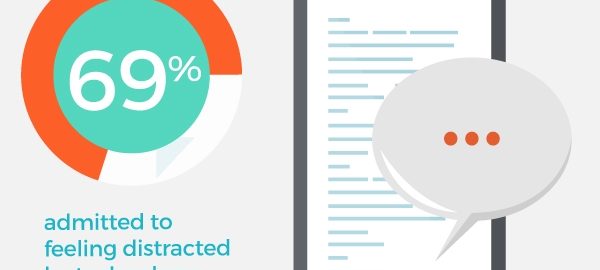— December 12, 2018
In the golden age of the smartphone, we’re all experts at multitasking. It doesn’t take much effort to scroll through emails while you listen to music and message with friends. In fact, few of us even register that we’re multitasking at all. The act has become so ingrained in our daily lives that doing just one thing at a time seems like an odd choice.
When we really stop and consider how we spend our time, though, it’s easy to see that multitasking isn’t as efficient as we imagine it is. Consider the last time you brought your laptop into a meeting or worked on a data entry project while on a conference call. Chances are good that you missed out on details and nuance that are tough to catch when you multitask.
![The Sad Truth Behind Multitasking: Productivity’s #1 Killer [Infographic] The Sad Truth Behind Multitasking: Productivity’s #1 Killer [Infographic]](https://www.onlinesalesguidetip.com/wp-content/uploads/2018/12/The-Sad-Truth-Behind-Multitasking-Productivitys-1-Killer-Infographic.jpg)
The Perils of Task Switching
While we’d like to think that multitasking is the successful act of doing two or more things at one time, that’s not actually the reality. In truth, we simply task switch, spending moments on one thing before switching to another. These switches are serious work for the brain; rather than dedicating your entire focus to completing one action, your mind is constantly trying to catch up and shift attention to another task.
To task switch, your brain must do several things. To re-start a task, you have to spend time considering where you are in the project. Determining exactly where you left off and understanding the context of the overall task can take serious effort. The more times you switch tasks, the harder it becomes to keep track of each project’s details. This causes delays, resulting in less efficient work overall.
The Impact of Multitasking
Unsurprisingly, multitasking has negative effects on a person’s work. Projects take longer than intended and the final product is often less focused than it might have been otherwise. Mistakes are more common when one multitasks, so the odds of a detail slipping through the cracks are upped. Even those who think of themselves as multitasking masters may find that the quality of their work seriously decreases as they try to shoulder two or three tasks at a given moment.
When you’re not in production mode, multitasking can get in the way of learning and synthesizing information. It’s no surprise that doing two things at once results in a less thorough understanding of new concepts and ideas. Ultimately, multitasking slows us down, makes learning more difficult and negatively impacts the quality of our performance.
Overcoming the Multitasking Addiction
Make no mistake about it: the urge to multitask is indeed a strong one. Most of us have been multitasking so long that it feels odd to only focus on one activity at a time. To put our phones on silent, close our office door and simply complete a task feels borderline impossible for some. Thankfully, there are ways to overcome your multitasking addiction.
For starters, consider the narrative multitasking has and understand why it’s attractive. The idea that you can save time and brainpower is alluring, but you now know better. In fact, it’s much quicker and easier on your brain to do just one thing at a time. It’s why some have embraced the term single-tasking. It’s a more marketable version of what we’ve always known deep down: focusing on one thing at a time is more effective than multi-tasking.
There are a few different approaches to single-tasking. One of the most common is the Pomodoro Technique, which breaks up a single task into 20-minute chunks. Between each segment, you get five minutes to surf the net, check email, walk the dog or whatever you might need to give your brain a break. Once your break time is up, though, it’s back to the task at hand.
If you’re feeling tempted to multitask, mindfulness can help. Meditation has become a crucial tool among those working at Silicon Valley start-ups. Follow their lead by practicing simple mindfulness exercises when the urge to multitask is overwhelming. Also, consider going on brief phone “fasts” where you turn off your phone for an hour, an afternoon or even an entire day. You’ll be shocked to find just how much time is wasted on checking notifications each day.
Those who really struggle with interruptions should consider employing a virtual receptionist. When turning off your phone simply isn’t an option, a receptionist can field incoming calls and forward only the most important matters onto you. No matter what your industry, virtual receptionists and other productivity tools can help you become more efficient without feeling the need to multitask. Employ these strategies the next time you’re tempted!
Digital & Social Articles on Business 2 Community
(84)
Report Post




